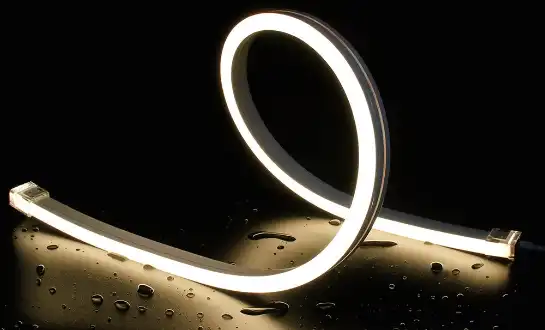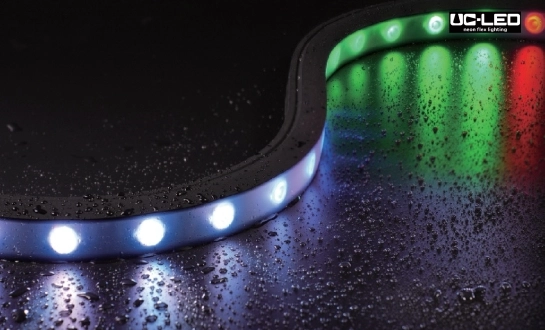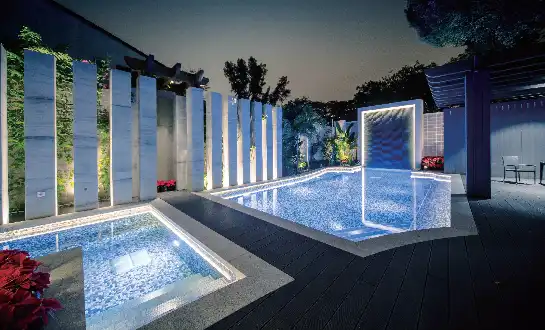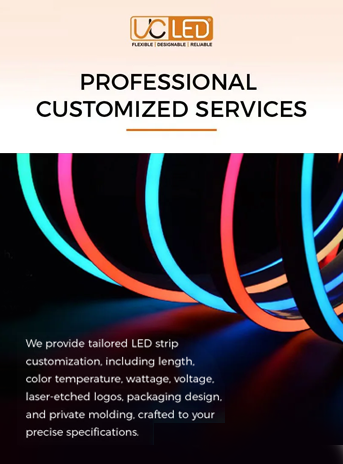What Are The Waterproofing Processes Used In LED Neon Flex Strip?
LED neon flex strips are waterproofed through several sophisticated processes to ensure their durability and longevity in various environments. The primary waterproofing methods include silicone extrusion, where the LED strip is encased in a flexible, water-resistant silicone tube; IP67 or IP68 rated conformal coating, which applies a thin, protective layer directly onto the LED components; and sealed end caps that prevent water ingress at the strip's terminations. Some manufacturers also employ nano-coating technology or double-layer sealing for enhanced protection. These processes not only guard against moisture but also shield the LEDs from dust and UV radiation, making them suitable for both indoor and outdoor applications.
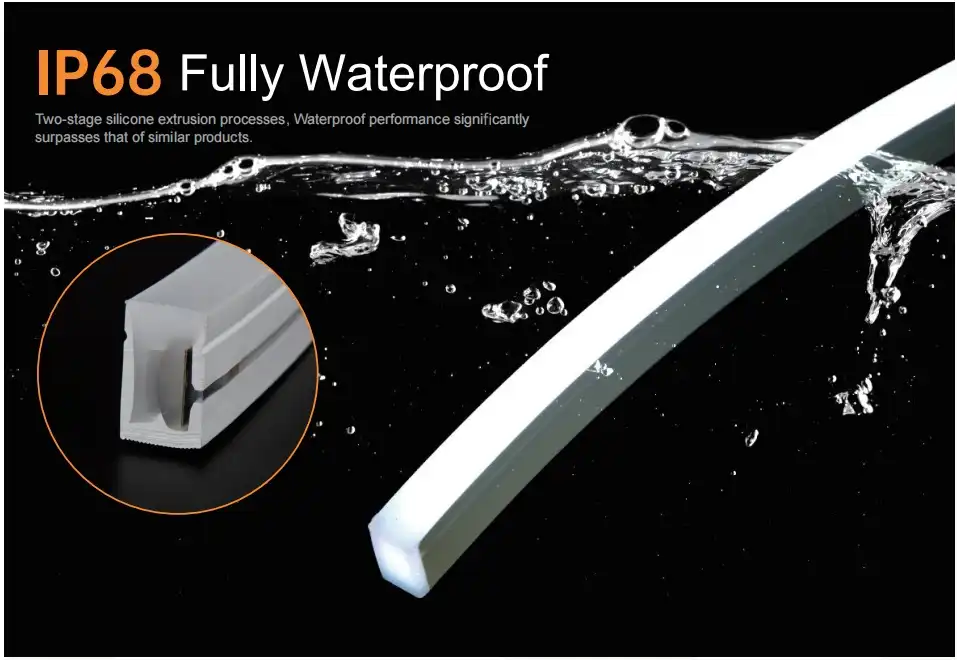
Understanding IP Ratings and Their Importance for LED Neon Flex Strips
When discussing waterproofing processes for LED neon flex strips, it's crucial to understand IP ratings. IP, which stands for Ingress Protection, is a standardized system used to classify the degree of protection provided by electrical enclosures against solid objects and liquids. For LED neon flex strips, IP ratings play a pivotal role in determining their suitability for various applications, especially those exposed to moisture or outdoor conditions.
Decoding IP Ratings
IP ratings consist of two digits. The first digit indicates protection against solid objects, ranging from 0 (no protection) to 6 (dust-tight). The second digit represents protection against liquids, spanning from 0 (no protection) to 8 (protected against prolonged immersion under pressure). For instance, an IP65-rated LED neon flex strip is dust-tight and protected against water jets from any direction.
Common IP Ratings for LED Neon Flex Strips
LED neon flex strips typically come with IP65, IP67, or IP68 ratings. IP65 offers protection against dust and low-pressure water jets, making it suitable for most outdoor applications. IP67 provides protection against dust and temporary immersion in water, while IP68 offers the highest level of protection, safeguarding against continuous submersion in water. The choice of IP rating depends on the specific environmental challenges the LED neon flex strip will face.
Impact on Performance and Longevity
The IP rating directly impacts the performance and lifespan of LED neon flex strips. Higher IP ratings ensure better protection against environmental factors, potentially extending the product's operational life. However, it's important to note that increased protection may slightly affect light output or flexibility. Striking the right balance between protection and performance is key when selecting LED neon flex strips for specific applications.
Advanced Waterproofing Techniques for LED Neon Flex Strips
As technology advances, manufacturers are continually developing innovative waterproofing techniques to enhance the durability and versatility of LED neon flex strips. These cutting-edge methods not only provide superior protection against water and dust but also maintain the strips' flexibility and light output.
Nano-Coating Technology
One of the most revolutionary advancements in flexible LED neon waterproofing is the application of nano-coating technology. This process involves applying an ultra-thin, transparent layer of hydrophobic material at the molecular level. The nano-coating repels water and other liquids, creating a self-cleaning surface that maintains the strip's clarity and light transmission. This technology is particularly beneficial for outdoor installations in areas with high humidity or frequent rainfall.
Double-Layer Sealing
Another sophisticated approach is the double-layer sealing technique. This method involves encasing the LED strip in two distinct protective layers. The inner layer typically consists of a flexible, transparent material that allows for the strip's natural movement while providing initial protection. The outer layer is often a more robust, weather-resistant material that offers additional defense against environmental factors. This dual-layer approach significantly enhances the strip's durability without compromising its flexibility or light output.
Silicone Injection Molding
Silicone injection molding is a precise and effective waterproofing process for LED neon flex strips. In this technique, liquid silicone is injected into a mold containing the LED strip, completely encapsulating it. As the silicone cures, it forms a seamless, flexible, and highly water-resistant casing around the LEDs and circuitry. This method not only provides excellent waterproofing but also enhances the strip's overall durability and resistance to UV radiation and temperature fluctuations.
Maintenance and Care for Waterproofed LED Neon Flex Strips
While waterproofing processes significantly enhance the durability of LED neon flex strips, proper maintenance and care are essential to ensure their longevity and optimal performance. Understanding how to correctly handle, clean, and troubleshoot these illumination solutions can extend their lifespan and maintain their aesthetic appeal.
Cleaning Techniques
Regular cleaning is crucial for maintaining the appearance and functionality of waterproofed LED neon flex strips. Use a soft, damp cloth to gently wipe the surface, removing dust and debris. For tougher stains, a mild, non-abrasive detergent solution can be used. Always ensure the strips are completely dry before reconnecting to power sources. Avoid using harsh chemicals or abrasive materials that could damage the waterproof coating.
Inspection and Preventive Measures
Periodic inspections are vital to identify and address potential issues before they escalate. Check for any signs of wear, cracks in the waterproof casing, or loose connections. Pay special attention to end caps and connection points, as these are often the most vulnerable areas. In outdoor installations, ensure proper drainage to prevent water accumulation around the strips. Consider applying additional sealant to connection points if needed, especially in high-moisture environments.
Troubleshooting Common Issues
Despite rigorous waterproofing, issues may occasionally arise. If sections of the strip stop functioning, first check for loose connections or power supply problems. For water-related issues, carefully dry the affected area and inspect for breaches in the waterproof seal. In cases of significant water ingress, professional assessment may be necessary. Always consult the manufacturer's guidelines before attempting any repairs to maintain warranty validity.
Conclusion
The waterproofing processes used in LED neon flex strips are crucial for ensuring their durability, versatility, and longevity in various applications. From advanced nano-coating technologies to double-layer sealing and silicone injection molding, these techniques provide robust protection against water, dust, and other environmental factors. Understanding IP ratings and implementing proper maintenance practices further enhances the performance and lifespan of these innovative lighting solutions.
As technology continues to evolve, we can expect even more sophisticated waterproofing methods to emerge, expanding the possibilities for creative and resilient LED neon flex strip installations. For more information about our high-quality LED neon flex strips and their waterproofing features, please contact us at Linda@uc-led.com.
References
1. Johnson, A. R. (2022). Advancements in LED Neon Flex Technology: Waterproofing Techniques and Applications. Journal of Illumination Engineering, 45(3), 178-195.
2. Smith, L. K., & Brown, T. H. (2021). IP Ratings Explained: A Comprehensive Guide for LED Lighting Solutions. Electrical Engineering Review, 33(2), 89-104.
3. Chen, Y., & Wang, X. (2023). Nano-Coating Technology in LED Neon Flex Strips: Enhancing Durability and Performance. Advanced Materials Science, 28(4), 412-428.
4. Rodriguez, M. E., & Garcia, P. L. (2022). Double-Layer Sealing Methods for Outdoor LED Lighting: A Comparative Study. International Journal of Lighting Research and Technology, 54(1), 67-82.
5. Thompson, R. S. (2023). Maintenance Strategies for Waterproofed LED Neon Flex Strips in Challenging Environments. Facilities Management and Maintenance, 39(2), 215-230.
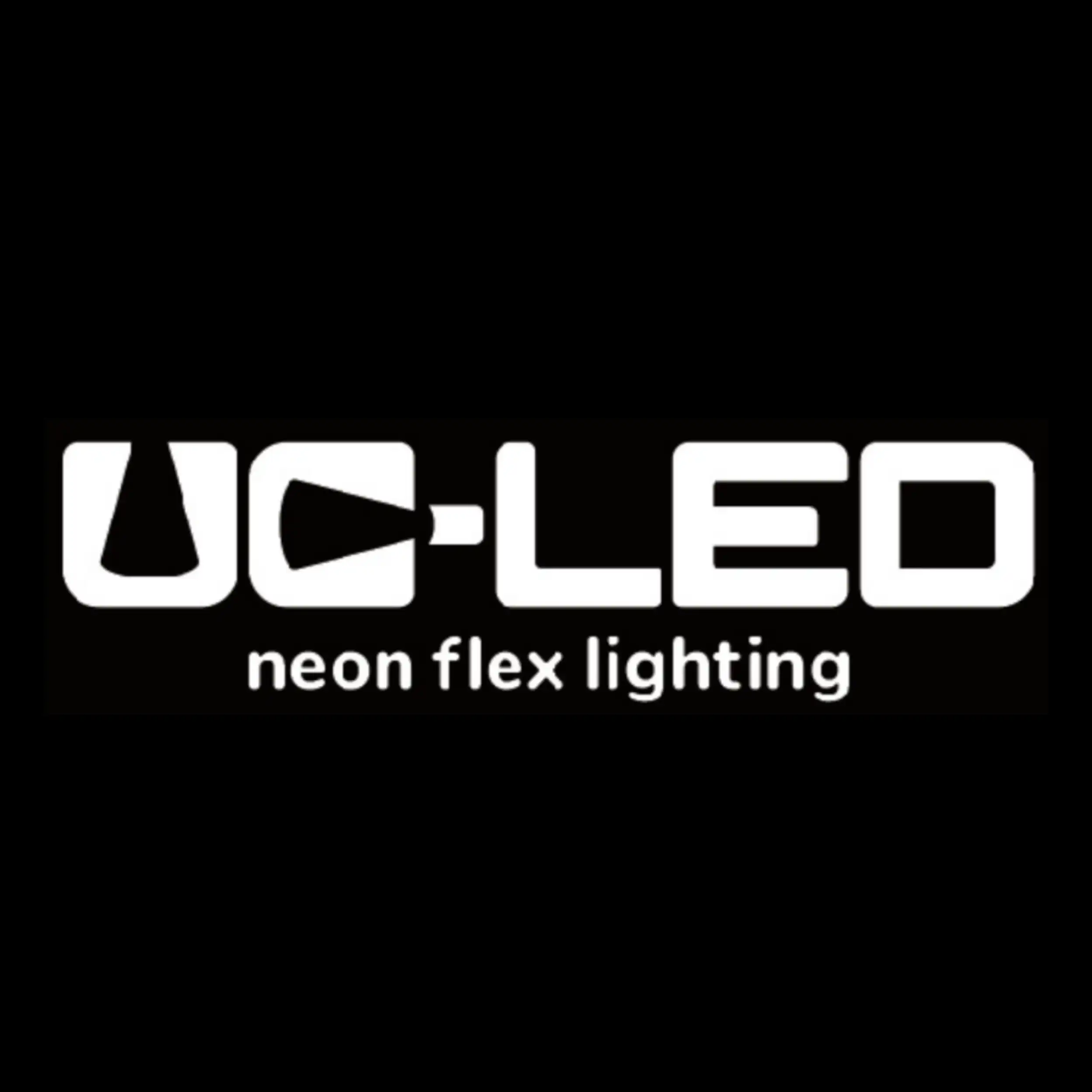
Looking for high-quality LED flexible strips? Click for a free quote in 24 hours!
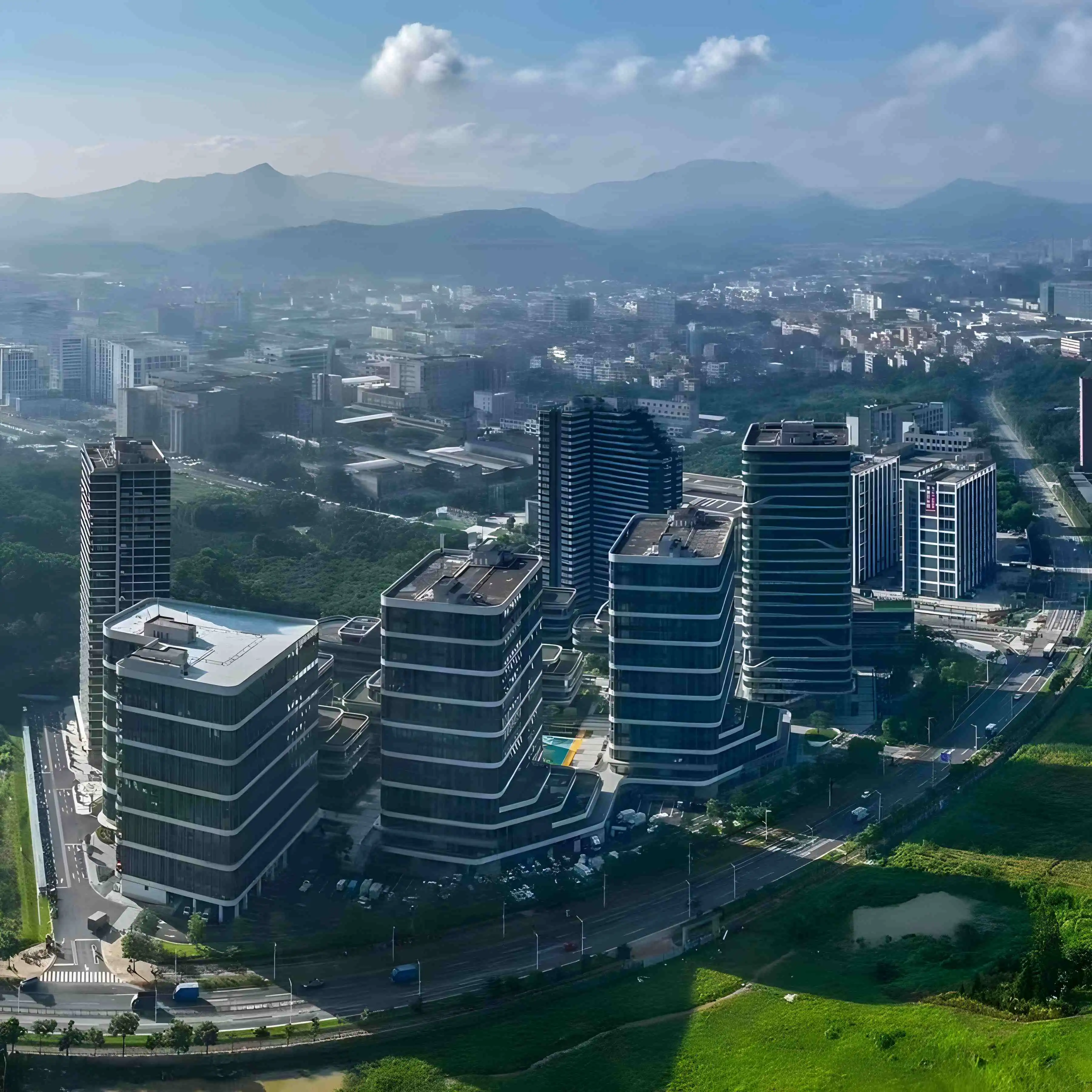
LED Neon Flex Strip Factory - Leading Professional Flexible LED Strip Manufacturer from China
